*** Proof of Product ***
Exploring the Essential Features of “Anthony Goodman – Understanding the Human Body”
Understanding the Human Body: An Introduction to Anatomy and Physiology, 2nd Edition
Discover this essential guide to understanding the remarkable anatomy and physiology of the human body, presented by a trusted surgeon and professor of medicine.
LECTURE (32)
01:Cardiovascular System-Anatomy of the Heart
This introductory lecture examines the anatomy of the fist-sized muscle that pumps blood through the body. We review the distinction between arteries and veins and discuss the location of the heart, its coverings, layers, and subdivisions.
02:Cardiovascular System-Physiology of the Heart
In this lecture, we examine the functioning of the cardiac cycle. We also examine the functioning of the heart’s conduction system, the functioning of the valves (which produce the heart’s distinctive “lub-dub” sound), and possible complications, notably atherosclerosis.
03:Cardiovascular System-Anatomy of the Great Vessels
This lecture examines the anatomy of the three vessel networks that circulate blood. We identify and describe the structure of the vessels that form these networks. Next, we examine the major circulatory routes for the blood: arterial and venous systemic circulation, pulmonary circulation, and hepatic portal circulation.
04:Cardiovascular System-Physiology of the Great Vessels
In this lecture, we examine the physiology of the large blood vessels-how they control blood flow, regulate blood pressure, and control bleeding when ruptured. We will also examine the composition of blood and the functions of each of its parts-plasma, white blood cells, and red blood cells.
05:Respiratory System-Anatomy of the Lungs
This lecture examines the anatomy of the respiratory system. After studying the integration of the respiratory system with the circulatory system, we review the anatomy of the structures through which air enters the body and passes into the lungs.
06:Respiratory System-Physiology of the Lungs
We turn now to the physiology of the respiratory system. We examine the four areas where respiration occurs and the consequences of blocking this respiration. We review the physiology of the movement of gases into the lungs and of their exchange with waste gases. Finally, we turn to the central respiratory centers, and we examine some respiratory disorders and their treatments.
07:Nervous System-Anatomy of the Brain
This is the first of seven lectures on the nervous system. We examine the anatomy of the brain-its principal components and its main anatomical divisions. Next we examine the divisions of the cerebrum and the functional areas of the cerebral cortex.
08:Nervous System-Physiology of the Brain
We turn now to the brain’s physiology. After considering how the nervous and endocrine systems work together, we review the functions of the nervous system and of nervous tissue. The main divisions of the central and peripheral nervous systems are reviewed. Finally, we distinguish afferent from efferent nerves and describe the categories of cranial and spinal nerves.
09:Nervous System-Spinal Cord and Spinal Nerves
This lecture examines the anatomy and functions of the spinal cord. We review the reflex arc, which allows the body to react rapidly to changes in the external environment. Finally, the lecture examines the categories and locations of the spinal nerves.
10:Nervous System-Autonomic Nervous System and Cranial Nerves
We begin this lecture by examining the autonomic nervous system, which controls the body’s basic functions without conscious intervention by the higher brain centers. We distinguish between the parasympathetic nervous system, which promotes rest and recovery, and the sympathetic nervous system, which promotes “fight and flight.” Finally, we will review the 12 pairs of cranial nerves and …
11:Nervous System-The Eyes
This lecture examines the eyes. We examine the anatomy of the eyeball, its coverings and functions, and the photoreceptors of the retina that allow us to perceive shades and colors of light. We also review the structure and functions of the lens, eyelids, lacrimal glands and ducts, and extrinsic eye muscles. Next, we consider how the eye perceives light and how the brain converts those perceptions…
12:Nervous System-The Ears, Hearing, and Equilibrium
We examine the anatomy of the organs of hearing: the external ear, the eardrum, the tympanic cavity, and the labyrinth. Next, the lecture reviews how these structures gather and transmit sound waves to the brain as nerve impulses. Finally, we examine the anatomy and functions of the vestibular apparatus, structures in the inner ear that govern balance.
13:Nervous System-Memory
This lecture examines memory and brain pathology and provides information about anesthesia and pain. First, we examine the nature, development, pathology, and mysteries of memory. We then examine kinds of damage to the brain and spinal cord and the results of such damage. We conclude by discussing anesthesia and referred pain.
14:Digestive System-Anatomy of the Mouth, Esophagus, and Stomach
This is the first lecture in a six-lecture examination of the digestive system. We examine the structures through which food passes before its conversion into nutrients for the body. We conclude by reviewing the four divisions of the stomach and its layers.
15:Digestive System-Physiology of the Mouth, Esophagus, and Stomach
Having studied the anatomy of the mouth, esophagus, and stomach, we turn now to the processes of digestion, absorption of nutrients, and excretion of waste products. This lecture examines mechanical then chemical digestion. Next, we examine the three phases of gastric secretion, and the process of gastric emptying. Finally, we consider stomach and digestive disorders and their treatments.
16:Digestive System-Anatomy of the Pancreas, Liver, and the Biliary Tree
This lecture examines the anatomy of the pancreas, liver, and gallbladder. First, we examine the gross and microscopic anatomy of the pancreas. We turn next to the liver. The location, size, and blood supply and routing of the liver are reviewed. Finally, the lecture examines the gallbladder and biliary tree-the duct system that drains bile from the liver into the gallbladder and the duodenum.
17:Digestive System-Physiology of the Pancreas, Liver, and the Biliary Tree
This lecture reviews the functions of the pancreas, the liver, and the biliary tree. The pancreas and liver secrete digestive juices and enzymes that aid in digestion and absorption. In this lecture, we review the components of the exocrine pancreas. After reviewing several pancreatic disorders, we turn to the liver and examine the various functions that it performs. We conclude with a review of c…
18:Digestive System-Anatomy of the Small Intestine, Colon, and Rectum
We turn now to the anatomy of the organs in which nutrients and water are extracted for use by the body and by which the resulting waste material is excreted from the body. The small intestine is the organ in which most of the absorption of nutrients and water occurs. We review its anatomical divisions, blood supply, and microstructure. We turn next to the large intestine, or colon, which absorbs …
19:Digestive System-Physiology of the Small Intestine, Colon, and Rectum
This last lecture on the digestive system examines the physiology of the small and large intestines and the rectum. First, we examine mechanical and chemical digestion in the small intestine. We turn next to the large intestine or colon, examining the reflexes that move feces into and through the colon for excretion. Finally, we examine the physiology of defecation.
20:Endocrine System-The Pituitary and Adrenal Glands
This is the first of three lectures on the endocrine system, the glands that secrete hormones directly into spaces surrounding cells. We examine the functional differences between the endocrine and nervous systems, and the basic properties of hormones. Next, we look at the most important endocrine glands: the pituitary gland, the hypothalamus, and the adrenal glands.
21:Endocrine System-Pancreas
This lecture examines the endocrine functions of the pancreas. As an endocrine organ, the pancreas produces insulin and glucagon. After reviewing the four cell types composing the endocrine pancreas, the lecture examines in detail several insulin-related disorders: two principal types of diabetes mellitus and hyperinsulinism.
22:Endocrine System-Thyroid and Parathyroid Glands
This lecture examines the thyroid gland and the parathyroid glands. For each, we briefly review the gross and microscopic anatomy, its physiology, and the consequences of dysfunction. Thyroid dysfunction can lead to cretinism, myxedema, Graves’ disease, and other pathologies. Parathyroid dysfunction can lead to disorders including bony demineralization, high calcium levels, duodenal ulcers, kidney…
23:Urinary System-Anatomy of the Kidneys, Ureters, and Bladder
This is the first of two lectures on the urinary system. We examine the anatomy of the kidneys, the ureters, and the bladder. We consider the kidneys’ major functioning unit-the nephron. The lecture concludes by reviewing the conduits through which urine passes before excretion from the body.
24:Urinary System-Physiology of the Kidneys, Ureters, and Bladder
This concluding lecture on the urinary system examines the physiology of the urinary tract organs, especially the kidneys. The primary function of the urinary system is to maintain the body’s homeostasis. This lecture focuses on the physiology of the nephron and how it filters many of the blood’s components, reabsorbs some, and removes others. The lecture concludes by briefly reviewing the physiol…
25:Reproductive System-Male
Lecture 25 is the first of three on the reproductive system. We examine the gross anatomy of the male reproductive system. The scrotum contains the testes, which produce spermatozoa. The lecture also reviews the functions of the prostate and Cowper’s glands, the process of erection and ejaculation, and the composition of the semen.
26:Reproductive System-Female
This lecture reviews the female reproductive system. We begin by reviewing the anatomy of the external female genitalia, and the vagina, uterus, fallopian tubes, and ovaries. Next we consider the physiology of the menstrual cycle, fertilization, and early pregnancy. Finally, we examine the anatomy and physiology of the breast, the risk factors and treatments for breast cancer.
27:Reproductive System-Physiology of Genetic Inheritance
This lecture examines the physiology of genetic inheritance. It begins by identifying the differences between DNA in somatic and germ cells and between genetic and inherited changes in cell DNA. Next, it distinguishes between types of cells and reviews allele inheritance and the sex chromosomes. We examine several developmental abnormalities related to digestion, respiration, and cardiovascular ac…
28:Musculoskeletal System-Physiology and Physics of the Muscles
In this lecture, we will examine the physiology and physics of the muscles. There are three kinds: skeletal, smooth, and cardiac. The muscles are innervated by motor neurons, which stimulate them to contract. Nerves connect with target muscles by means of a neurotransmitter, which conducts the electrical stimulation from the nerve to the muscle across the synaptic gap. The lecture concludes by exa…
29:Musculoskeletal System-Anatomy of the Muscles
In this lecture, we examine how muscles operate as levers in conjunction with the bones. We review the names of the muscles, as indicated by their size, shape, orientation of their fibers, mechanical action, number of origins, origin and insertion points, function, and location.
30:Musculoskeletal System-Bones
In this final lecture on the musculoskeletal system, we examine the divisions and functions of the skeletal system. First, we consider the gross anatomy of the bones, marrow cavity, blood supply, and surface markings. Next, we examine the cells that compose the bones. Finally, the lecture reviews kinds of bone fractures and their treatments.
31:Immune System-Anatomy and Physiology
This lecture examines the body’s mechanisms for defense against invaders. The main components of the immune system are T-cells, B-cells, natural killer cells, phagocytes, and major histocompatibility complex antigens. The lecture also examines the ability of B-cells and T-cells to memorize past immunological responses and reviews clinical applications: transplantation surgery, HIV/AIDS, and autoim…
32:The Biology of Human Cancer
In this lecture, we will examine the subject of cancer. We will see how the fragility that allowed us to evolve has saddled us with susceptibility to mutations that can cause cancer. We examine environmental causes of cancer: chemicals, physical agents, and biologic agents, as well as the mechanisms that lead to the basic definition of cancer: failure to differentiate, potential to invade, potenti…
DETAILS
Overview
Surgeon, writer, and Professor Anthony A. Goodman puts a solid understanding of human anatomy and physiology within your grasp. You’ll learn to see how structure and function are integrated into efficient unity&;amp;-a perspective that reveals the logic and symmetry of the human organism with awesome clarity. Using detailed color illustrations, life-sized models, and, in one lecture, a video shot during surgery, Dr. Goodman gives clear descriptions of anatomy and physiology aimed at the level of the interested layperson.
About
Anthony A. Goodman
“It is the greatest gift to be able to explore the ever-changing outer edges of science and share them with my students.”
ALMA MATER Cornell Medical College
INSTITUTION Montana State University
Dr. Anthony A. Goodman is Adjunct Professor of Medicine at Montana State University and Affiliate Professor in the Department of Biological Structure at the University of Washington School of Medicine. He earned his B.A. from Harvard College and his M.D. from Cornell Medical College and trained as a surgical intern and resident at the University of Michigan Medical Center in Ann Arbor. He completed his surgical training and served as chief resident at the Harvard Surgical Service of Boston City Hospital, the New England Deaconess Hospital, the Lahey Clinic, and Cambridge City Hospital. For 20 years, Dr. Goodman worked as a general surgeon in south Florida and served as Clinical Associate Professor of Surgery at the University of Miami School of Medicine. In addition, he served as a surgeon with the U.S. Army Medical Corps and on the hospital ship for Project HOPE. He was also Visiting Professor of Surgery at the Christchurch, New Zealand, Clinical School of Medicine. Founder of the Broward Surgical Society, Dr. Goodman is a Fellow of the American College of Surgeons and a Diplomate of the National Board of Medical Examiners and the American Board of Surgery.
Please see the full list of alternative group-buy courses available here: https://lunacourse.com/shop/

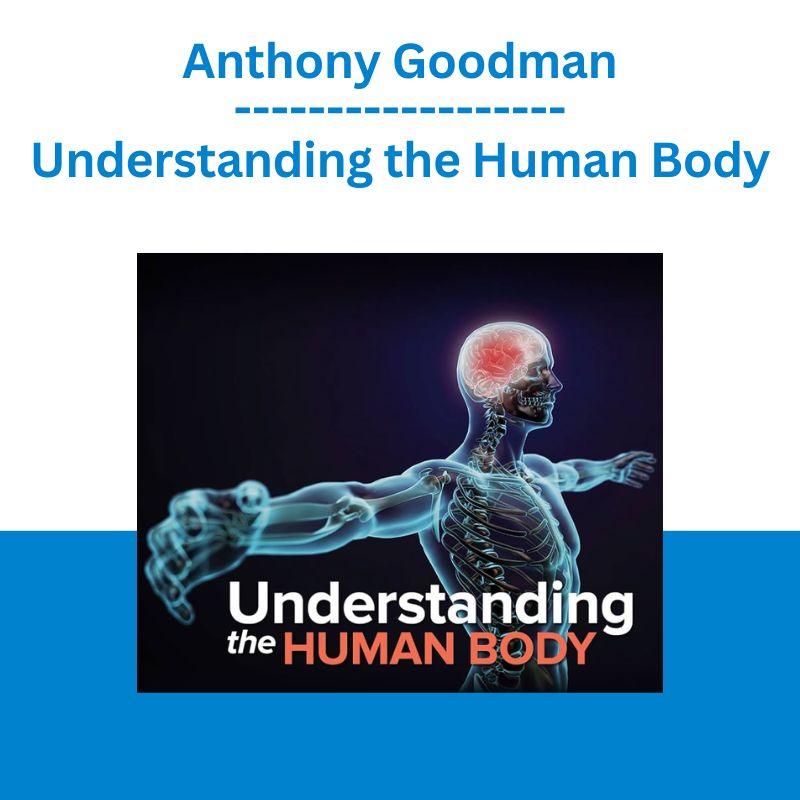








 Fred Haug - Virtual Wholesaling Simplified
Fred Haug - Virtual Wholesaling Simplified  John Painter - Baguazhang For Street Combat 6 DVD Set
John Painter - Baguazhang For Street Combat 6 DVD Set  Chris Capre - Advanced Price Action Ongoing Training & Webinars
Chris Capre - Advanced Price Action Ongoing Training & Webinars  Matan Feldman - The 13-Week Cash Flow Modeling - Wall Street Prep
Matan Feldman - The 13-Week Cash Flow Modeling - Wall Street Prep  Debra Poneman & Ronnie Newman - Ageless: The Secrets of Anti-Aging for Your Brain, Your Body and Your Future
Debra Poneman & Ronnie Newman - Ageless: The Secrets of Anti-Aging for Your Brain, Your Body and Your Future  Sarah Kay Hoffman - 30-Day Gut Reset
Sarah Kay Hoffman - 30-Day Gut Reset  Racing Workshop - Complete Online Package
Racing Workshop - Complete Online Package  Julie Stoian & Cathy Olson - Launch Gorgeous - Funnel Gorgeous Bundle
Julie Stoian & Cathy Olson - Launch Gorgeous - Funnel Gorgeous Bundle  Oliver Velez - Essential Strategy Of Trade For Life
Oliver Velez - Essential Strategy Of Trade For Life  Toshko Raychev - Profit System + ITF Assistant
Toshko Raychev - Profit System + ITF Assistant  Money Miracle - George Angell - Use Other Peoples Money To Make You Rich
Money Miracle - George Angell - Use Other Peoples Money To Make You Rich  George Fontanills & Tom Gentile - Optionetics 6 DVD Series Home Study Course (Digital Download)
George Fontanills & Tom Gentile - Optionetics 6 DVD Series Home Study Course (Digital Download)  Matthew Kratter - Trader University
Matthew Kratter - Trader University  Kevon Cheung - Find Joy in Chaos: How to Build Your Twitter/X Presence so Connections and Opportunities Come Find You (eBook + Workbook)
Kevon Cheung - Find Joy in Chaos: How to Build Your Twitter/X Presence so Connections and Opportunities Come Find You (eBook + Workbook)  Iaroslav Kononov, Max Kravchenko & Pasha Ho - 3D Motion Beast - Motion Design School
Iaroslav Kononov, Max Kravchenko & Pasha Ho - 3D Motion Beast - Motion Design School  Emanuele Bonanni - My Trading Way
Emanuele Bonanni - My Trading Way  Dave Landry - Stock Selection Course
Dave Landry - Stock Selection Course  Alphashark - The AlphaShark SV-Scalper
Alphashark - The AlphaShark SV-Scalper  Forexmentor - Recurring Forex Patterns
Forexmentor - Recurring Forex Patterns  How To Become A Professional Commercial Wedding Photographer - Patrick Hall
How To Become A Professional Commercial Wedding Photographer - Patrick Hall  Rohan Dhawan - Facebook Ads For E-Commerce Guide To Selling Any Product
Rohan Dhawan - Facebook Ads For E-Commerce Guide To Selling Any Product  Glenn Harrold & Ali Calderwood - Solfeggio Sonic Meditation (Complete Set)
Glenn Harrold & Ali Calderwood - Solfeggio Sonic Meditation (Complete Set)  The 6W Kegel Program - Romeo
The 6W Kegel Program - Romeo  Shawn Blanc - The Focus Course
Shawn Blanc - The Focus Course  Robyn Thompson - Junkers To Millions Boot Camp
Robyn Thompson - Junkers To Millions Boot Camp 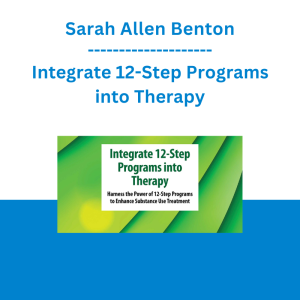 Sarah Allen Benton - Integrate 12-Step Programs into Therapy: Harness the Power of 12-Step Programs to Enhance Substance Use Treatment
Sarah Allen Benton - Integrate 12-Step Programs into Therapy: Harness the Power of 12-Step Programs to Enhance Substance Use Treatment  BadBoy – Social Media Decoded
BadBoy – Social Media Decoded  Erik Banks - Alternative Risk Transfer
Erik Banks - Alternative Risk Transfer  Simpler Trading - Bruce Marshall - The Options Defense Course
Simpler Trading - Bruce Marshall - The Options Defense Course  Jared Goetz - Ecom Hacks Academy 2020
Jared Goetz - Ecom Hacks Academy 2020  Professor Bart D. Ehrman - How Jesus Became God
Professor Bart D. Ehrman - How Jesus Became God  Vicki Steine - 3-Day Nutrition for Mental Health Certification Course - PESI
Vicki Steine - 3-Day Nutrition for Mental Health Certification Course - PESI  Mike McClary, Rich Henderson & Dan Ashburn - Amazing Selling Machine 9
Mike McClary, Rich Henderson & Dan Ashburn - Amazing Selling Machine 9  Tim Stoney - Trailer Music Redefined
Tim Stoney - Trailer Music Redefined  Tele-Play the Preschool Way! Interactive Play Therapy Interventions for Engaging Young Children - Amy Nelson
Tele-Play the Preschool Way! Interactive Play Therapy Interventions for Engaging Young Children - Amy Nelson  Ed Ponsi - Forex Trading
Ed Ponsi - Forex Trading  Dr Robert Anthony - Zero Resistance Weight Release
Dr Robert Anthony - Zero Resistance Weight Release  Kristine Lilly, Alfred Galustian & Charlie Cooke - Coerver Girls eBook
Kristine Lilly, Alfred Galustian & Charlie Cooke - Coerver Girls eBook  Sandra Ingerman - Shamanic Journeying for Guidance and Healing Global Community Program - The Shift Network
Sandra Ingerman - Shamanic Journeying for Guidance and Healing Global Community Program - The Shift Network  Fabio Leonardi & Gerry Grassi - BT12 Short Course 48 - Changing Individual Systems in Order to Obtain Lasting Solutions: Three Brief Strategic Techniques
Fabio Leonardi & Gerry Grassi - BT12 Short Course 48 - Changing Individual Systems in Order to Obtain Lasting Solutions: Three Brief Strategic Techniques  Kristin Merizalde - Learn How to use Mineral Balancing and HTMA with Holistic Nutrition
Kristin Merizalde - Learn How to use Mineral Balancing and HTMA with Holistic Nutrition  Sandra Ingerman - The Acient Practice of Shamanic Joureying
Sandra Ingerman - The Acient Practice of Shamanic Joureying  Parenting Autism Experts Library, Vol. 1 - Penny Williams & Sarah Wayland
Parenting Autism Experts Library, Vol. 1 - Penny Williams & Sarah Wayland  Jeff Millers - Agency Scaling Secret Inner Circle V3.0
Jeff Millers - Agency Scaling Secret Inner Circle V3.0  Kate Edwards - Design a Great Customer Experience
Kate Edwards - Design a Great Customer Experience  Scott Phillips - Crypto Cash System
Scott Phillips - Crypto Cash System  Akil Stokes & Jason Graystone - TierOneTrading - Trading Edge 2019
Akil Stokes & Jason Graystone - TierOneTrading - Trading Edge 2019  Reshveen - Profit From Panic
Reshveen - Profit From Panic 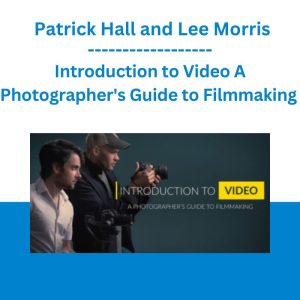 Introduction to Video A Photographer's Guide to Filmmaking - Patrick Hall and Lee Morris
Introduction to Video A Photographer's Guide to Filmmaking - Patrick Hall and Lee Morris  Nathan Chan - Instagram Domination 5.0
Nathan Chan - Instagram Domination 5.0  Introduction to Adobe Premiere - A Video Editing Tutorial - Patrick Hall and Lee Morris
Introduction to Adobe Premiere - A Video Editing Tutorial - Patrick Hall and Lee Morris 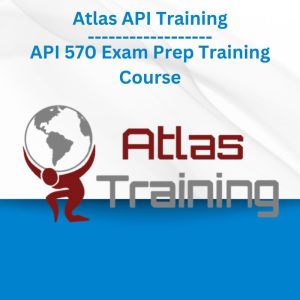 Atlas API Training - API 570 Exam Prep Training Course
Atlas API Training - API 570 Exam Prep Training Course  Kamini Thomas, Kirk Thomas - The Modern Kama Sutra: The Ultimate Guide to the Secrets of Erotic Pleasure
Kamini Thomas, Kirk Thomas - The Modern Kama Sutra: The Ultimate Guide to the Secrets of Erotic Pleasure 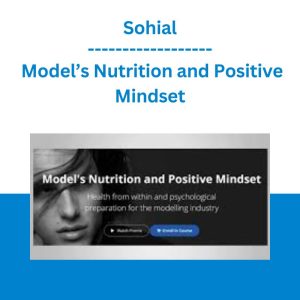 Sohial - Model’s Nutrition and Positive Mindset
Sohial - Model’s Nutrition and Positive Mindset 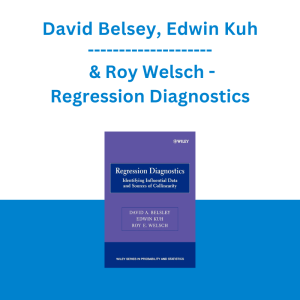 David Belsey, Edwin Kuh & Roy Welsch - Regression Diagnostics: Identifying Influential Data and Sources of Collinearity
David Belsey, Edwin Kuh & Roy Welsch - Regression Diagnostics: Identifying Influential Data and Sources of Collinearity  George Fontanills & Tom Gentile - Optionetics Wealth Without Worry Course
George Fontanills & Tom Gentile - Optionetics Wealth Without Worry Course  Donald Lutz - The Mathematics of Personal Finance
Donald Lutz - The Mathematics of Personal Finance  Tim Karsliyev - Insta Traffic Mastery - 6 Figure A Month Instagram System
Tim Karsliyev - Insta Traffic Mastery - 6 Figure A Month Instagram System 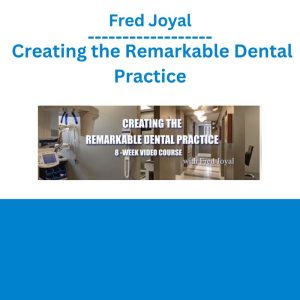 Fred Joyal – Creating the Remarkable Dental Practice
Fred Joyal – Creating the Remarkable Dental Practice  Nik Swami - NFT Essentials: Create, Buy and Sell NFTs
Nik Swami - NFT Essentials: Create, Buy and Sell NFTs  Alex Mandossian - Productivity Secrets
Alex Mandossian - Productivity Secrets 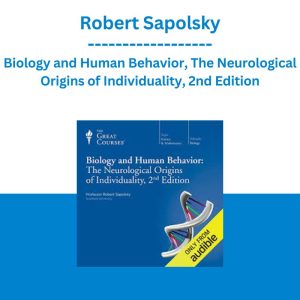 Biology and Human Behavior, The Neurological Origins of Individuality, 2nd Edition - Robert Sapolsky
Biology and Human Behavior, The Neurological Origins of Individuality, 2nd Edition - Robert Sapolsky